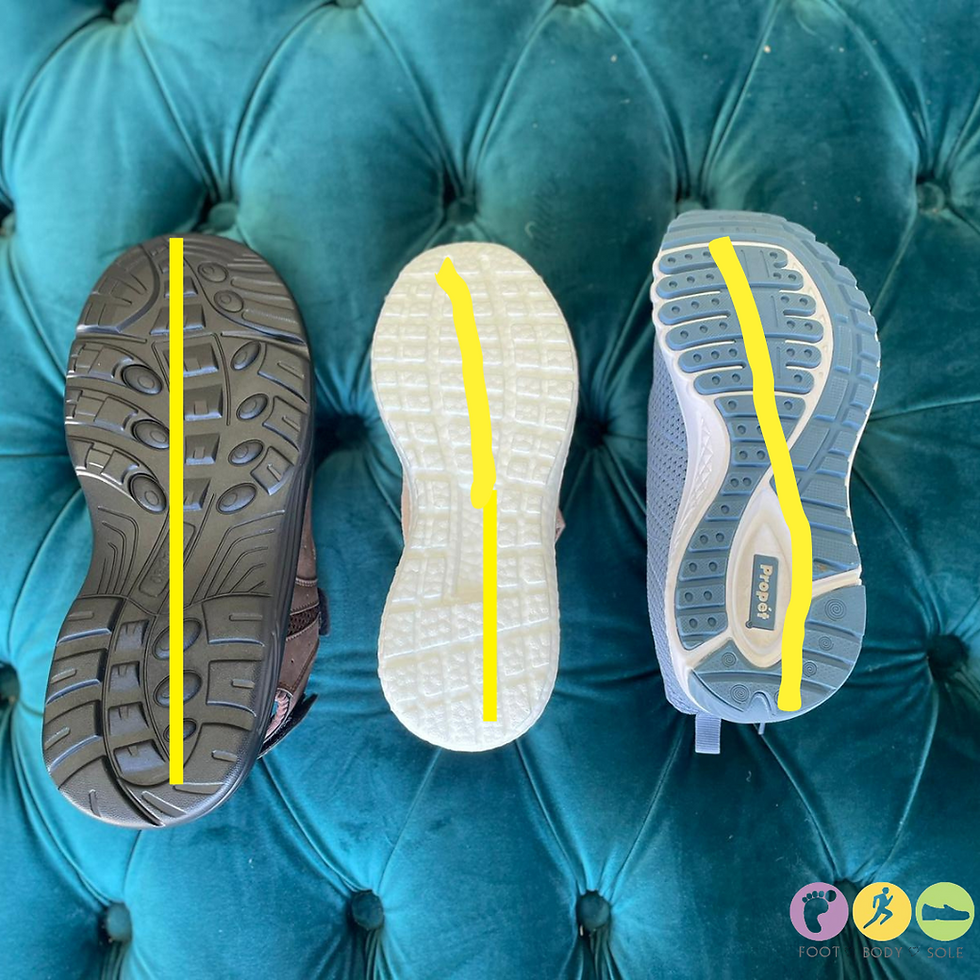In-toeing In Children
- Foot Body Sole
- Aug 28, 2019
- 2 min read

Have you noticed your child is intoeing when they walk?
Are they tripping more often than their peers?
Did you know that greater than 10% of children aged between 3 and 5 years intoe?
What is intoeing?

Intoeing occurs when a child is walking with their toes pointing inwards. It can be a normal part of development in the growing child aged between 3-5 years old and is most often outgrown.
Common causes of intoeing in children include:
● Metatarsus adductus: this is when the foot curves inwards like a banana!
This shape can be caused from the position the child is in whilst in the uterus and due to the flexibility of the foot usually corrects itself over time by 2 or 3 years old.
● Tibial torsion: twisting inwards of the tibia (shin bone) of the leg, this tends to increase from birth and is a normal part of development. It is usually outgrown by the age of 8 years old.
● Femoral anteversion: twisting inwards of the femur (thigh bone), this will continue reducing with age and is a normal part of development. It is usually outgrown by the age of 10 years old.
● Cerebral palsy

Simple tips to help reduce intoeing in your child!
● Wear footwear with a straight last: this ensures that the shape of the footwear isn’t contributing to the intoeing gait
● Avoid “W”sitting and sleeping positions that hold the feet in a rotated position
● Gentle exercises to straighten the foot if it curves inwards or wearing shoes on the opposite feet
So when is it time to take your child to the podiatrist for intoeing?
● Your child is tripping often and it is affecting their playtime with peers
● The intoeing is asymmetrical or your child is walking with a limp
● The intoeing is not improving over time
● The intoeing is increasing over time
How a podiatrist can help:
Podiatrists are trained professionals that have experience in the development and gait cycle of children.
Your podiatrist will gather a thorough clinical history of your child and do appropriate biomechanical assessments to determine the cause of your child’s intoeing.
Education will be provided on appropriate footwear and exercises that can be incorporated to reduce the intoeing.
Corrective orthotics may be issued to ensure your child can keep up with their peers in the playground without unwanted tripping or discomfort. However, sometimes the treatment for intoeing can be as simple as watching and waiting for your child’s body to correct itself.
If you are unsure about the development of your children’s feet, there is never any harm in asking a professional!
Call us on 1800 778 316 or make an appointment by clicking below.









Comments